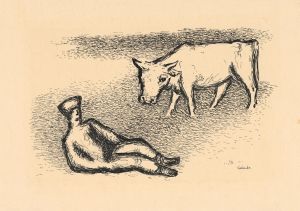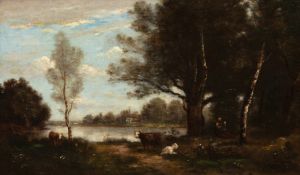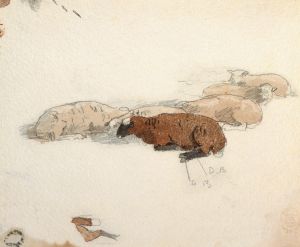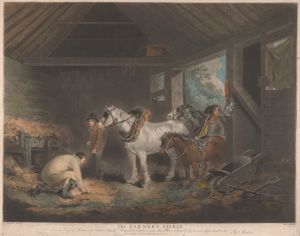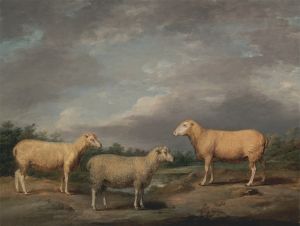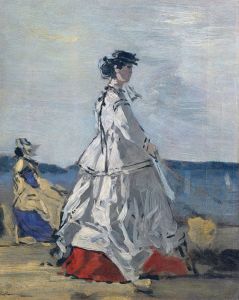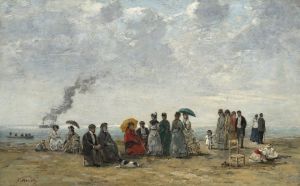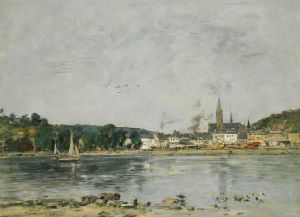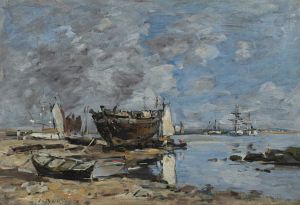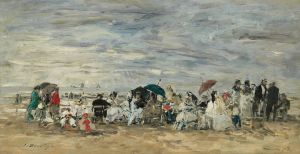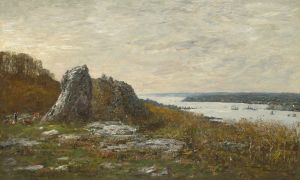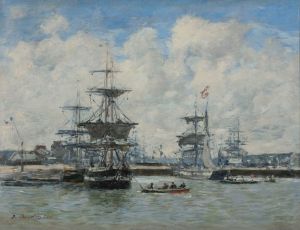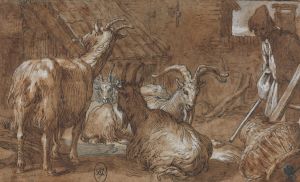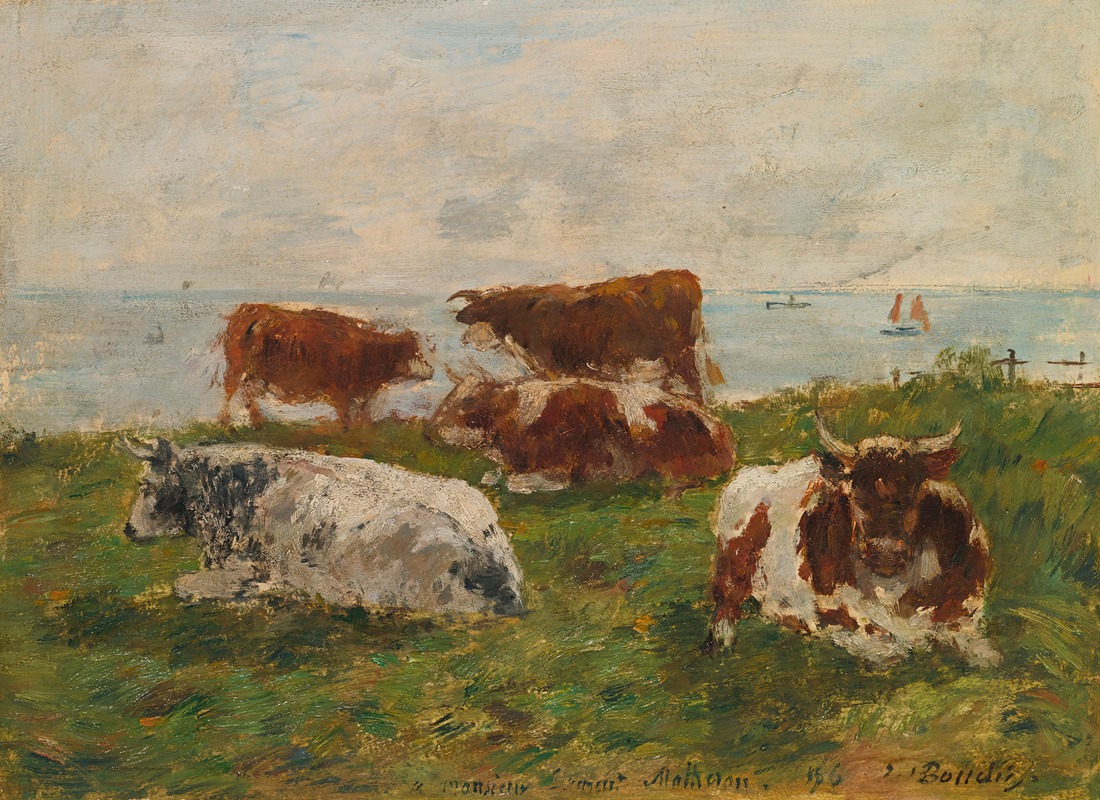
Vaches Au Pré Au Bord De La Me
A hand-painted replica of Eugène Boudin’s masterpiece Vaches Au Pré Au Bord De La Me, meticulously crafted by professional artists to capture the true essence of the original. Each piece is created with museum-quality canvas and rare mineral pigments, carefully painted by experienced artists with delicate brushstrokes and rich, layered colors to perfectly recreate the texture of the original artwork. Unlike machine-printed reproductions, this hand-painted version brings the painting to life, infused with the artist’s emotions and skill in every stroke. Whether for personal collection or home decoration, it instantly elevates the artistic atmosphere of any space.
Eugène Boudin's painting Vaches au pré au bord de la mer (translated as Cows in a Meadow by the Sea) is a work by the French artist, who is widely regarded as one of the precursors of Impressionism. Boudin, born in Honfleur in 1824, is best known for his depictions of coastal scenes, skies, and rural landscapes, often capturing the interplay of light and atmosphere. This particular painting reflects his interest in pastoral and maritime themes, which were central to his oeuvre.
The artwork portrays a serene rural scene, with cows grazing in a meadow near the sea. The composition is characterized by its naturalistic depiction of the landscape, emphasizing the harmony between the land, animals, and the sky. Boudin's skillful use of light and color creates a sense of tranquility, with soft tones and a luminous atmosphere that evoke the breezy, open-air quality of the Normandy coast, a region that inspired much of his work.
Boudin was one of the first French painters to paint en plein air (outdoors), a practice that influenced the Impressionists, including Claude Monet, who once referred to Boudin as his "master." His ability to capture fleeting moments of light and weather conditions is evident in Vaches au pré au bord de la mer. The painting exemplifies his dedication to portraying the natural world with immediacy and sensitivity, qualities that earned him recognition among his contemporaries.
The exact date of creation for Vaches au pré au bord de la mer is not definitively documented, but it is consistent with Boudin's body of work from the mid-to-late 19th century. During this period, he frequently painted scenes of rural life and coastal landscapes in Normandy and Brittany. The painting is executed in oil on canvas, a medium Boudin commonly used to achieve the rich textures and subtle gradations of light that characterize his style.
Today, Eugène Boudin's works are celebrated for their role in bridging the gap between the Barbizon School and the Impressionist movement. His paintings are held in numerous public and private collections worldwide, including major museums such as the Musée d'Orsay in Paris and the National Gallery of Art in Washington, D.C. While specific details about the current location or ownership of Vaches au pré au bord de la mer are not readily available, it remains an example of Boudin's enduring contribution to 19th-century French art.
This painting highlights Boudin's ability to find beauty in everyday scenes and his commitment to capturing the ephemeral qualities of nature, solidifying his reputation as a master of landscape painting.





